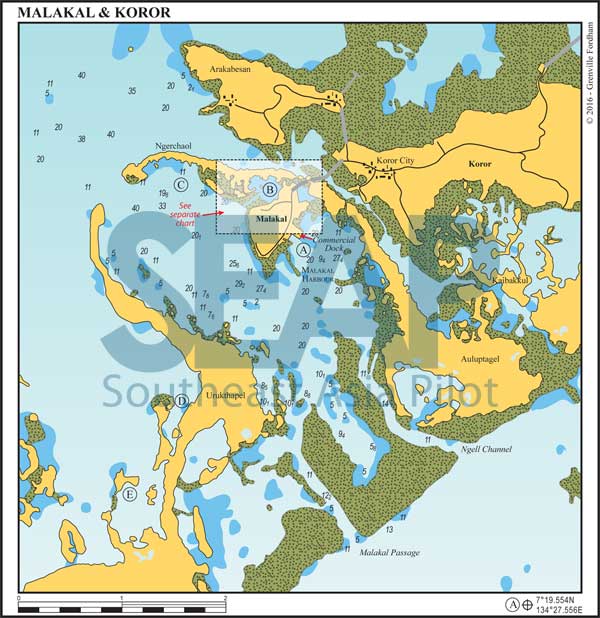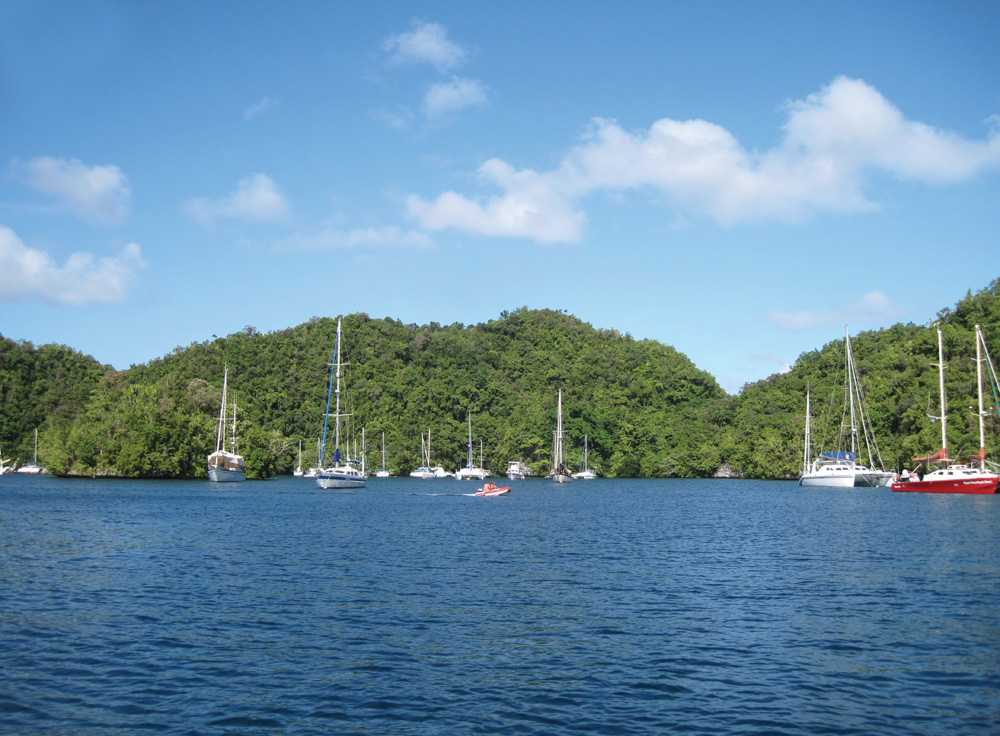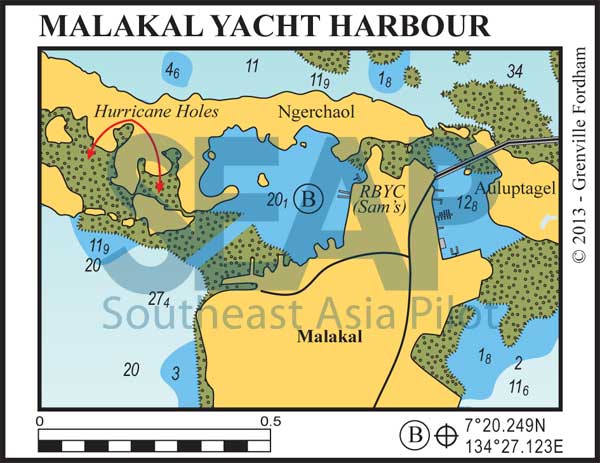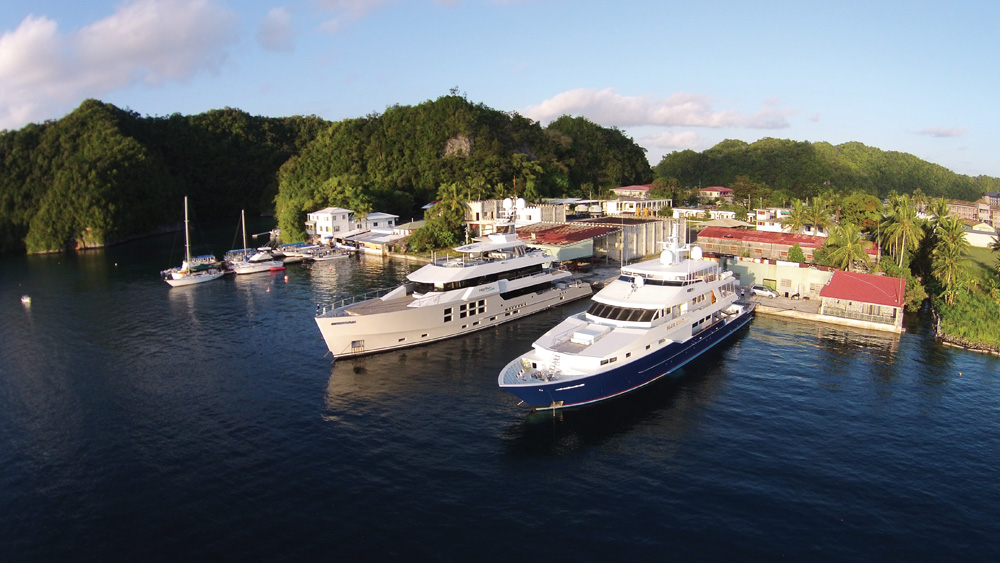This website uses cookies to improve your experience. We believe you'll be OK with this, but you can opt-out if you wish. Or you can go to 'cookie settings' and choose which cookies to allow. Privacy policy


540 miles from Sorong, Indonesia










There are three approaches into Malakal port, two from the east and one from the west. Ships and deep draft vessels must use the western approach. Start at 7°32.540N, 134°27.642E and follow the leads down through the hook-shaped channel into ‘The Pincers’, then up onto the commercial dock.
Of the two natural channels through the east reefs we recommend the less tricky southern Malakal channel over the Ngel channel further north, which is tighter and shallower. Start at 7°16.825N, 134°27.956E mid channel near the red steel cylindrical pillar marking the port side of the reef. Pick your way in on the well-marked narrow channel during daytime hours with a good foredeck lookout.
The check-in facilities are all located at the main commercial dock, where you’ll need plenty of fenders to safely come alongside. Give Malakal Port Authority a call on VHF Ch.16 during office hours and they will take your lines and assist you.
Once you’ve been processed at the dock we recommend three choices to anchor nearby. Directly east of the dock near the coast in 10-15 metres at 7°19.501N, 134°28.212E, west of the South Malakal reef markers at 7°19.759N, 134°26.900E in 20-30 metres or at the main yacht harbour off the Royal Belau Sam’s Tours dock.
2 miles from Malakal Harbour










The buoyed channel through the reef is always more than four metres deep and gives access to the main yacht anchorage in Palau. Leave the shipwreck and the small island to port and pick up the singular RBYC welcome mooring on arrival. Don’t attempt the passage west near the wreck.

All the moorings are owned, so check to be sure you’re grabbing an RBYC visiting yachts’ mooring. Superyachts can now tie up stern-to the dock next to Sam’s Tours. Sam’s hopes to develop this dock area into their own marina and resort for visiting superyachts. Alternatively, anchor between the island and the docks on broken coral in 15-18 metres before negotiating a private mooring ashore.
Another option is the lake-like shelter found in the ‘Outer Sanctum’ or the ‘Hole in the wall’ in the Ngerchaol lagoons, but do not enter without first acquiring local knowledge.
To the east are the Royal Belau Yacht Club, busy Sam’s Tours and the Shell fuel station docks. Dinghies are welcome alongside as are larger yachts after the morning rush of dive boats have departed. The fuel dock depth is 2-3 metres and is usually vacant between 9.30am and 3pm. When taking fuel and water beware the nasty reef just 15 metres to the north side.
The RBYC has cheap (US$25) membership and all the services you would expect. A PADI 5 Star Dive Shop and Eco-Tour Company, full amenities to visiting cruising boats and super yachts, including agent services, moorings, dinghy dock, fuel dock, potable water, bar and restaurant, wi-fi, mail-drop service, private showers and vessel entry clearance.
The Bottom Time Bar and Restaurant at Sam’s offers excellent food, drink and company. The bar is the perfect people-watching platform during the daily flurry of dive boats heading to, and from, arguably some of the best diving locations on the planet. Best to join Sam’s tours to the dive spots and don’t miss the jellyfish lake. Click here for information on RBYC and Sam’s Tours.
Click to view Palau photo gallery.

2 miles from Sam’s










Anchor in 5-12 metres west of the island for deeper draft vessels. Shoal drafts can squeeze in to anchor inside the lagoon in 2-3 metres on sand clear of the dive boat mooring.
This awesome anchorage with great snorkelling is the ‘learn to dive’ favourite for instructors with beginners, so take care when they’re down under. Around to the north are the Japanese Gun Caves that are well worth a visit by dinghy when conditions permit.
5 miles from Sam’s Tours










Just outside the pincers to the southwest are a couple of nice hurricane holes on Urukthapel Island. Getting there from Malakal harbour is pretty straightforward with reliable chart info currently available for this area. Anchor on sand in 15-20 metres. Good snorkelling all around here.
7 miles from Sam’s










Two miles south on Urukthapel Island is another interesting hurricane hole. There are some small moorings for dive boats but don’t use these unless you’ve checked the ground tackle yourself and know you can trust it. Otherwise anchor on sand in 15-25 metres. Move if a dive boat arrives. There are two wrecks here, which are well worth diving on.
